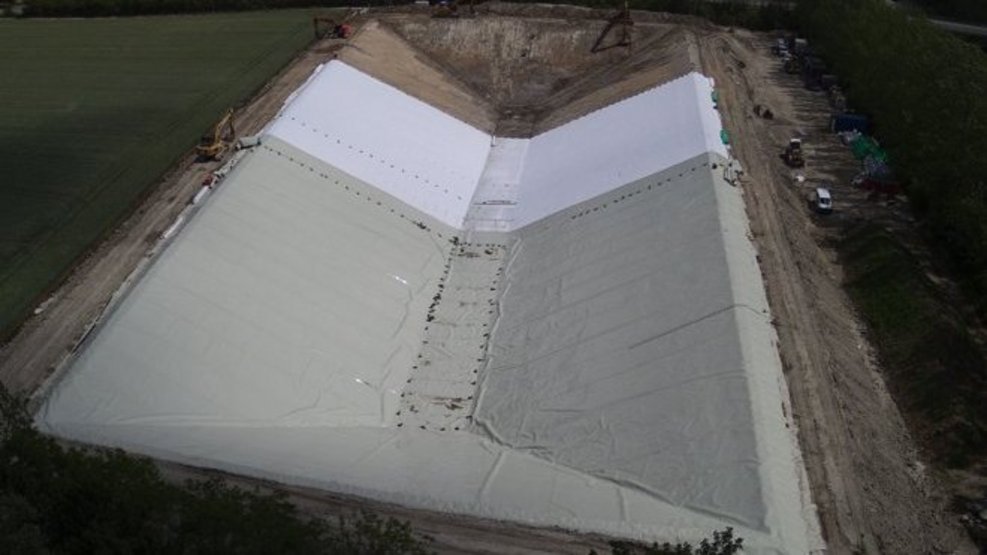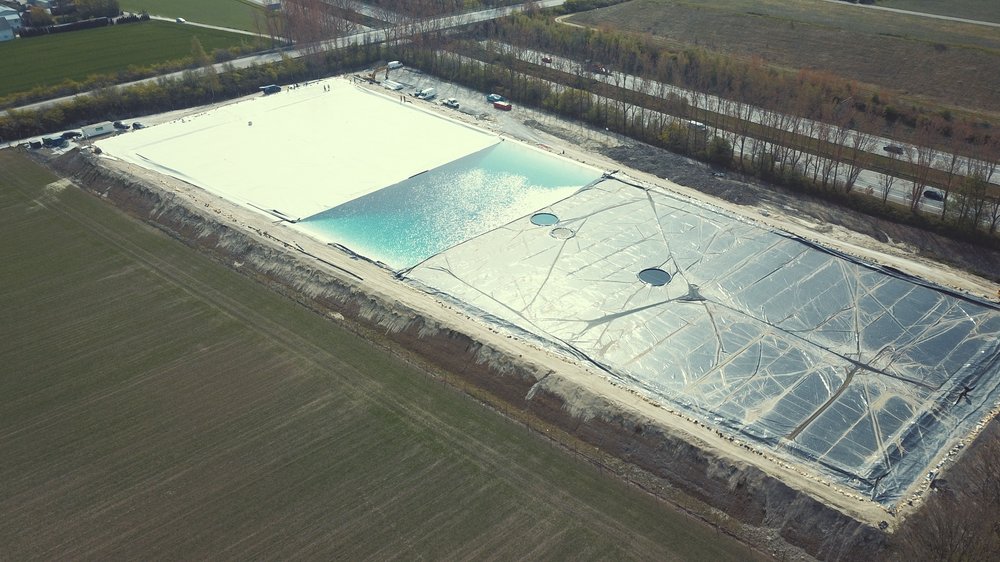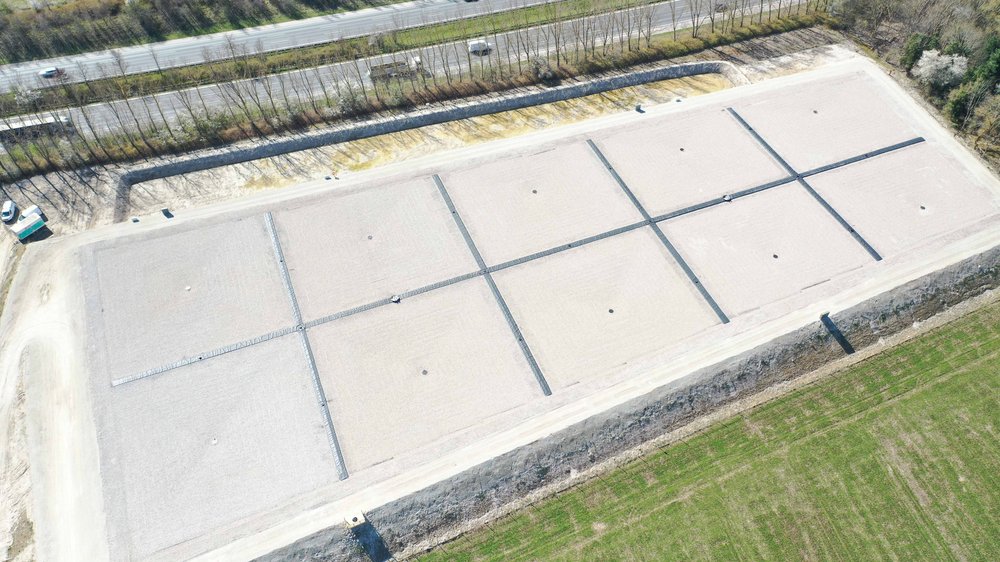Storage systems are necessary for the integration of renewable energy sources. Buffer storage tanks can cover peak loads at short notice and at the same time optimize the operation of heat generation economically. Pit Thermal Energy Storage (PTES) technology represents a revolutionary approach to energy storage. Thermal energy bound in water is temporarily stored in a pit excavated into the ground. However, the project in Høje Taastrup goes one step further. Here, the heat from four biomass-fired combined heat and power plants and three waste incineration plants is temporarily stored, thus optimizing their operation. This efficient method makes it possible to use the system in Høje Taastrup as a buffer storage tank with 25 to 30 charge and discharge cycles per year. As a result, peak loads can be covered, and peak load systems can be saved.
PP-HTR: High temperature resistant geomembrane
The gigantic pit in Høje Taastrup, Denmark, has a capacity of 70,000 cubic meters of water. An essential aspect of the pit thermal energy storage system is its geomembrane. The particularly high temperature of 90 degrees Celsius puts a strain on the material of the geomembranes used to line the pit. To withstand this thermal load over a longer period and to ensure the operational reliability of the pit thermal energy storage, AGRU has developed an innovative material solution based on the material PP-HTR. The high temperature resistant material was tested at the Institute of Polymeric Materials and Testing (IPMT) at the Johannes Kepler University Linz for its temperature resistance and durability. The institute estimates the service life of the AGRU PP-HTR geomembrane at a continuous temperature of 90 °C at more than 25 years. The company G quadrat GmbH installed the high-temperature-resistant AGRU geomembrane as a pit sealing system. A temporary floating cover was also installed until the pit was filled. Subsequently, this was dismantled and replaced by the high-temperature resistant AGRU PP-HTR geomembrane. It serves as a floating base for the heat-insulating cover built on top of it. A leakage control system guarantees a waterproof sealing during installation and continuous monitoring of the pit throughout its entire service life.
Climate-neutral future
With a charging and discharging capacity of 30 MW and a storage capacity of 3,300 MWh, the pit thermal energy storage system makes a significant contribution to the efficiency and sustainability of the heat supply. The plant contributes an annual value of DKK 6-7 million to the district heating network for the entire Copenhagen metropolitan area of Copenhagen and makes a decisive contribution to decarbonization. Previously unused waste heat went through another life cycle by being temporarily stored and used for heating. The success of this project shows the great potential of PTES technology as a cost-effective and sustainable solution to improve energy efficiency and reduce CO2 emissions.


